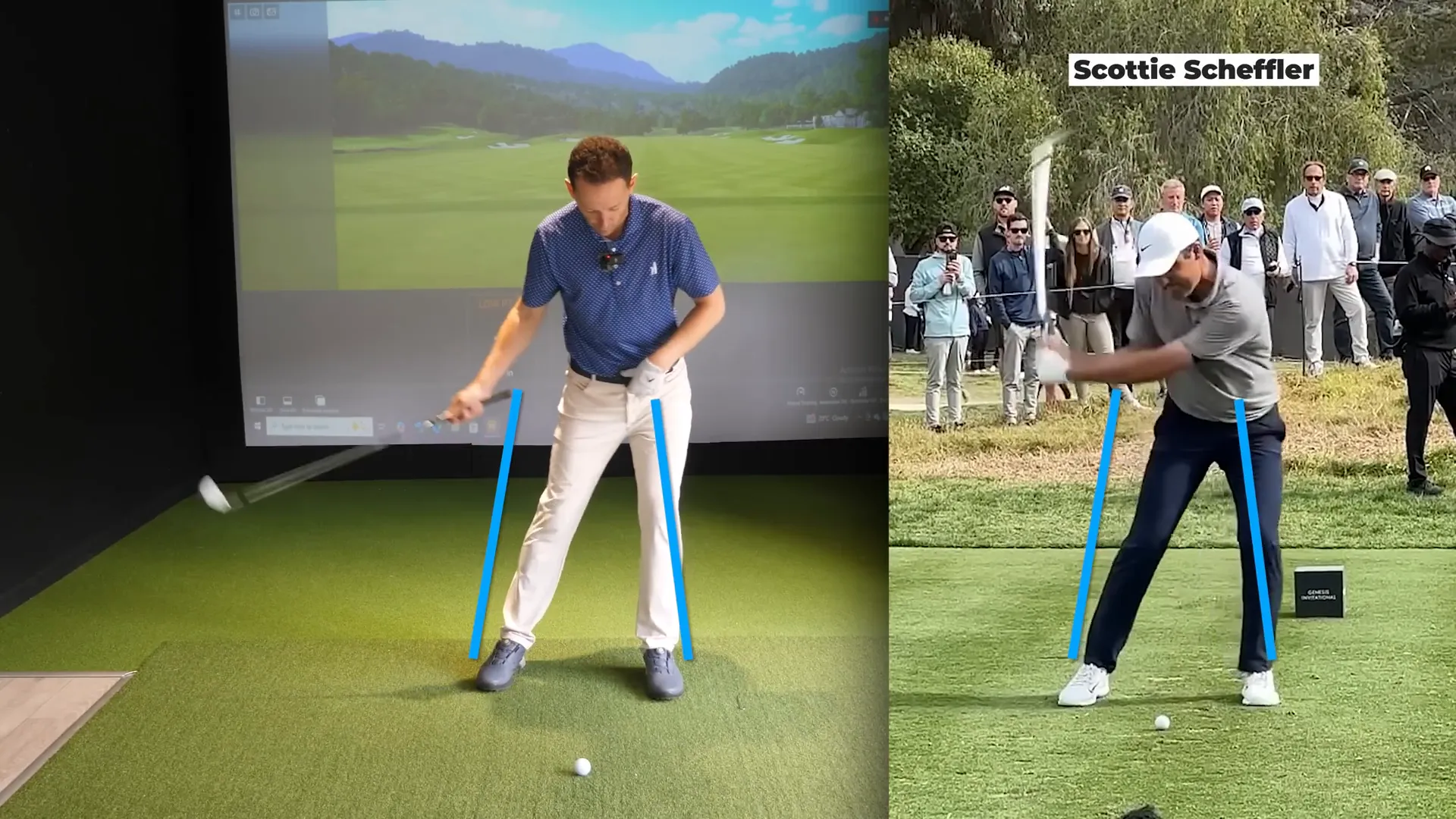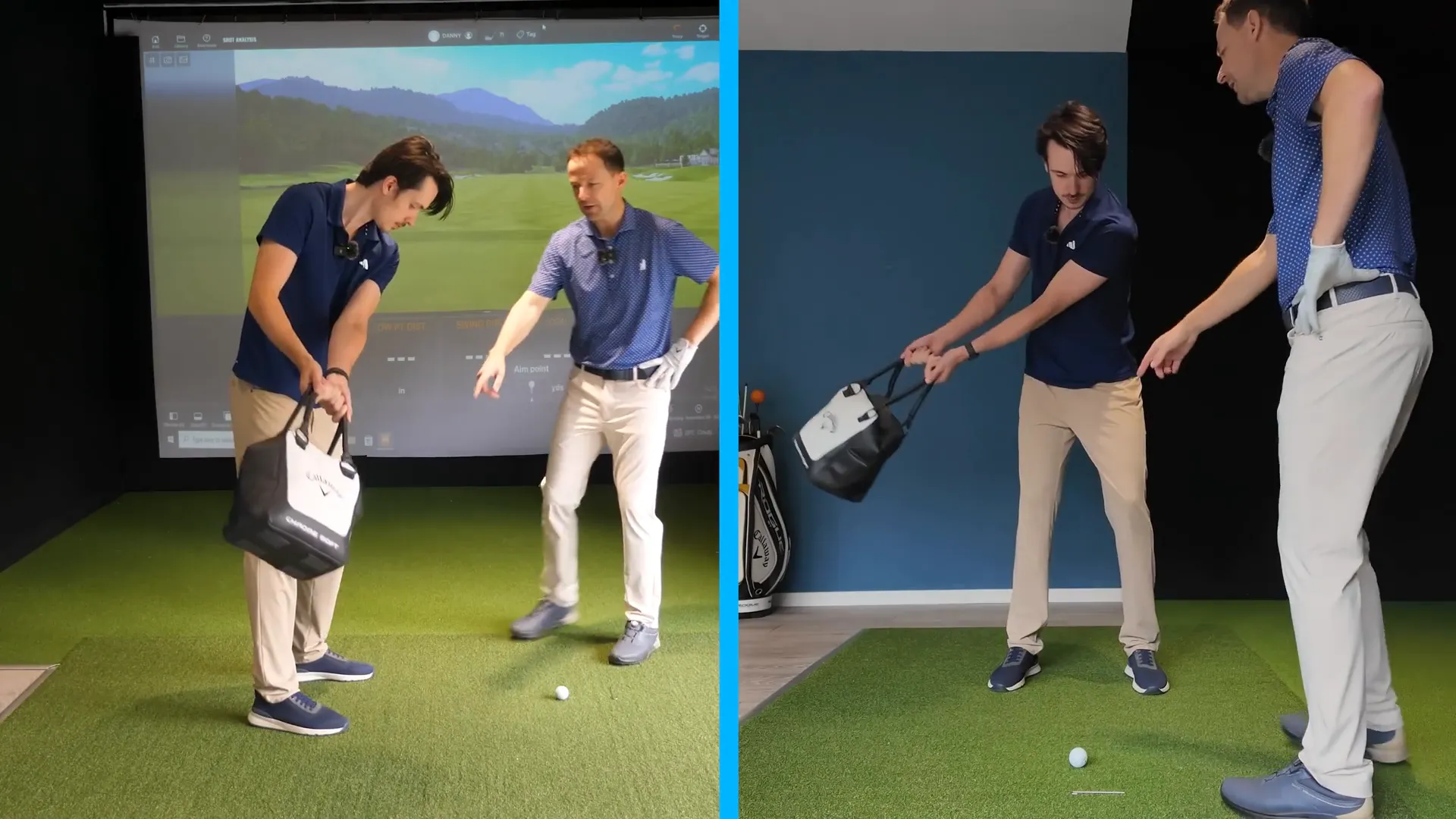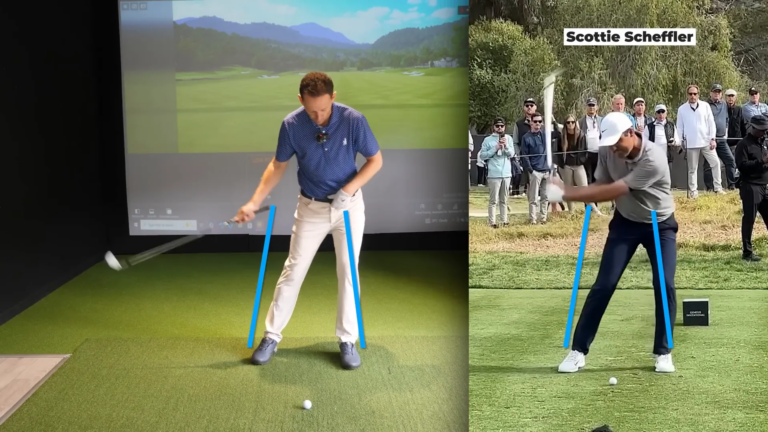
Master the Simple Move that Transforms Your Game
Hi, I’m Danny Maude. Over years of coaching thousands of golfers, I’ve uncovered a single movement pattern that consistently enhances ball-striking ability. Most amateurs misinterpret or completely overlook this technique. This guide will reveal its importance and teach you how to incorporate it to stop slicing, ensure solid iron strikes, and gain effortless distance across all clubs in your bag.
Step 1: Understand the Problem — Why Most Golfers Get it Wrong
Great players consistently make ball-first contact and then the turf. Achieving this requires a specific body movement that many amateurs lack. If the low point of your swing trails the ball, you’re likely to hit the turf first or “thin” your shots. This results in:
- Inconsistent iron strikes
- A propensity to slice or produce large pulls due to an incorrect club path
About 90% of amateurs I see exhibit a motion that misses the ideal forward low point or over-rotates, leading to a loss of both power and accuracy.
Step 2: Learn the Core Principle — Discover the Move That Delivers
The pivotal move is deceptively simple: allow a controlled side-to-side weight transfer, moving your hips forward while keeping your head centered. This controlled rhythm isn’t to be confused with a careless sway. Instead, it’s a purposeful pressure transfer aiding control.
- By moving the hips forward, you’ll naturally make contact with the ball before the golf swing’s low point.
- This proper weight shift helps maintain an on-line club path, minimizing directional errors and adding distance without extra swing speed effort.
Step 3: Appreciate the 3D Golf Swing
The golf swing is not just about rotation. It involves:
- Rotation, the traditional side-to-side motion.
- Side-to-side transfer, where forward hip motion occurs relative to the ball.
- Rise and fall movement, marked by the torso moving slightly back as the hips advance.
A controlled side-to-side transfer modifies your swing to drive your hips forward, allowing the head to stabilize the swing and create acceleration through impact.
Step 4: Feel it Yourself with the Weighted-Bag Drill
Before hitting balls, practice the motion using a heavy object to build muscle memory. Here’s the drill:
- Hold a weighted bag or similar between your palms before your chest.
- Initiate a pendulum swing, emphasizing the momentum created by the weight.
- Notice side-to-side pressure shifts in your feet as the hips lead in balance.
- Ensure your head maintains centered as hips move forward, counterbalancing smoothly.

Step 5: Transfer the Feeling to Your Swing
Gradually replace the weighted object with your club beginning with light practice swings:
- Start with two-club swings to simulate the weighted-bag’s feel.
- Transition to half-swing mid-irons, emphasizing quality contact and the hip’s forward push.
- Finally, practice full swings at varied lengths, ensuring hips lead while your head remains centered.
Step 6: Use the Stick Check
Prevent excessive lateral movement using a stick as a visual guide. Ensure your hip moves slightly past the stick while maintaining rotation:
- Position a stick behind your hip line.
- Execute your swing with side-to-side pressure, observing hip movement relative to the stick.
- Adjust if needed to maintain balanced rotation alongside lateral hip movement.
This guideline helps ensure your rotation and lateral movements are optimal for impact and speed.
Step 7: Driver Specifics — Harness the Power Effortlessly
The same principles apply with drivers, focusing on a later low point:
- Position the low point behind you by transferring weight effectively.
- Achieve significant thrust off the lead foot due to the striking resistance facilitated by body position.
- Enjoy improved swing paths, reducing the chances of slicing.
Step 8: Iron Specifics — Master Ball Striking
With irons, your focus should be on achieving a defined low point for consistent ball-first contact:
- Use weighted-bag drills for baseline practice, blending side movement into your daily routine.
- Check your swing at anticipation points to ensure divots occur after ball contact.
- Focus on improving the blend of transfer and rotation for exceptional striking without overdoing either element.
Step 9: Create Your Practice Plan
Design a weekly practice schedule tailored to your needs. Repetition and gradual intensity ensure a new habit and an effective swing. Follow structured guidelines to transition through practice focusing on all clubs in your bag.
Step 10: Overcome Common Mistakes
Address the most common errors like excessive sway or poor timing:
- Adjust lateral movements to avoid excessive swaying.
- Pair your movements keeping the head centered and stable.
- Integrate rotation to refine balance avoiding slice paths or topping shots.
Step 11: Track Your Progress
Monitor improvements visually and feel the difference in performance.
- Virtually record swings and compare alignment to desired impact goals.
- Notice smooth and connected swings, achieving sound and solid contact effortlessly.
Picture your results in enhanced ball striking and longer, more consistent shots.
Step 12: Daily Practice Checklist
Adopt a brief routine to maintain mastery:
- Include basic arm stretches and mobility exercises.
- Recreate the weighted-bag motion regularly.
- Emphasize pressure balance and swing comfortably.
Step 13: Common Questions about This Strategy
Q: Will the side-to-side move cause bad contact?
A controlled lateral move grounds your swing steps. Avoid the sway, encourage rhythm.
Q: Could I top shots using this routine?
Balance it with rotation corrections, matching motion requirements.
Q: What speed of results can I anticipate?
Feel these changes swiftly with consistent practice post the weighted-bag drips.
Q: Can older golfers apply this tactical method safely?
Yes, this method emphasizes simplicity aligned with even fitness levels to optimize natural physique flows.
Q: Do setup or posture alterations matter here?
No major changes needed. Focus on your keen rhythmic switch, orchestrating natural energy reallocation fluidly.
Step 14: Final Words — Commit to the Move
Unleashing productive rhythm and lift within your stroke is not a myth or an unobtainable standard. Embrace the identified pattern: employ a subtle side-to-side transfer, hips centered-forward, leveraging ample head control, and modify your body to harness efficient energy sustainably. Building your muscle memory through systematic drills transitions practice into game improvement.
Let this active attempt to streamline your swing manifest as cleaner contacts producing consequent possibilities on the course. Monitor and extend your confidence through diligent practice aligned towards fundamental strides in your golf prowess.


0 Comments